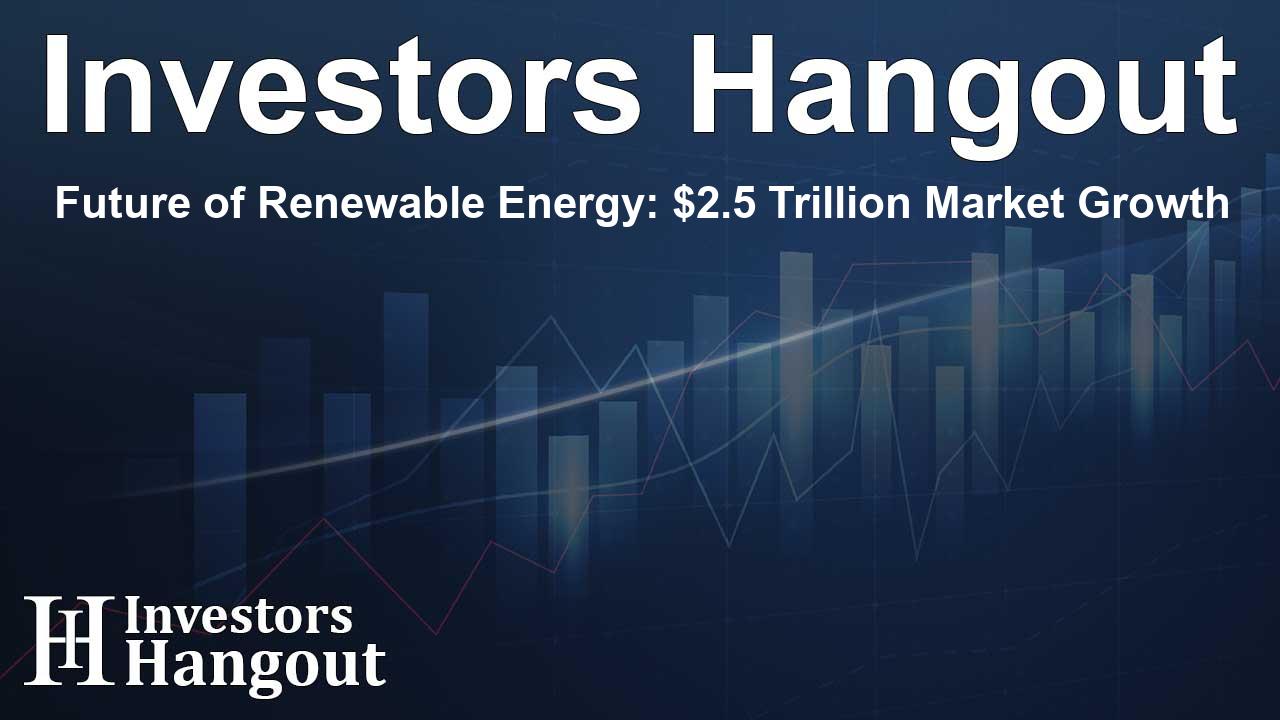Future of Renewable Energy: $2.5 Trillion Market Growth

The Emerging Landscape of Renewable Energy
The global renewable energy market is gaining momentum, predicted to surge from $1.1 trillion in 2023 to an astonishing $2.5 trillion by 2033, achieving an impressive annual growth rate (CAGR) of 8.5%. This shift reflects the growing commitment to sustainable energy solutions worldwide, emphasizing hydroelectric power, wind, bioenergy, solar, and geothermal energy as critical components of this shift.
Key Drivers of Market Expansion
A primary factor fueling this unprecedented growth trend is the supportive government policies and robust financial incentives that favor the adoption of renewable energy technologies. Yet, while investment is on the rise, the sector grapples with the challenge of high initial capital costs. As these barriers are addressed, new opportunities arise, particularly through the integration of renewable sources into smart grid technology.
Smart Grids Empowering Renewable Energy
The smart grid revolution promises transformative changes, offering utilities and energy companies avenues for business innovation and new revenue sources. By utilizing technologies like virtual power plants and demand-side management solutions, stakeholders can optimize energy utilization and enhance operational efficiency. Moreover, the emergence of data analytics and artificial intelligence further empowers the sector, allowing for real-time management of energy resources.
Hydroelectric Power: The Dominant Player
As we look deeper into energy types, hydroelectric power continues to lead the market, showcasing unmatched reliability and predictability compared to other sources. Its capacity to deliver consistent electricity generation makes it a linchpin in the renewable energy industry. By effectively controlling water flow, hydroelectric plants can adjust output to meet energy demand, reinforcing grid stability across the globe.
Residential Adoption of Renewable Technologies
The residential segment is a key player, holding a substantial market share in 2023 and expected to maintain its lead. Innovations in technology have made solar panels, wind turbines, and energy storage solutions not only more efficient but also more affordable for individuals, enhancing accessibility. Homeowners now have the ability to harness energy from renewable sources effectively, with advancements allowing them to store excess energy for periods when production dips.
Asia-Pacific: A Region on the Rise
The rapid growth seen in the Asia-Pacific region underscores a broader trend where regional policy frameworks and incentives are crucial in propelling renewable energy adoption. Countries in this region have instituted policies like renewable energy targets and financial incentives that provide stability and attract investment. This proactive approach contributes to a vibrant energy landscape, pushing forward commitments to reduce emissions and transition to sustainable energy systems.
Leaders of the Market
Prominent players in the renewable energy market include notable firms like Xcel Energy Inc., General Electric, and ACCIONA, each leveraging strategies such as product innovation, collaborations, and market expansion to solidify their positions. Their operations encompass a range of services, further enriching the competitive environment of the sector.
Market Trends and Insights
In the dynamic industry of renewable energy, trends are continually evolving. One emerging theme is the increasing public and private sector collaboration aimed at advancing renewable technologies and enhancing energy efficiency across sectors. This collaborative spirit is vital for accelerating the deployment of innovations that can meet the world’s growing energy demands.
Frequently Asked Questions
What is the projected growth of the renewable energy market?
The renewable energy market is anticipated to grow from $1.1 trillion in 2023 to approximately $2.5 trillion by 2033.
Why is hydroelectric power significant in this landscape?
Hydroelectric power is crucial due to its reliability and ability to provide stable energy, which is essential for maintaining grid stability.
How are smart grids influencing renewable energy adoption?
Smart grids facilitate the integration of various renewable energy sources, optimizing their utilization and enabling real-time energy management.
Which regions are leading in renewable energy growth?
Asia-Pacific is currently experiencing the fastest growth, driven by favorable policies and significant investment in renewable infrastructure.
Who are the major players in the renewable energy market?
Key industry leaders include Xcel Energy Inc., General Electric, and ACCIONA, among others, who are implementing diverse strategies to enhance their market presence.
About Investors Hangout
Investors Hangout is a leading online stock forum for financial discussion and learning, offering a wide range of free tools and resources. It draws in traders of all levels, who exchange market knowledge, investigate trading tactics, and keep an eye on industry developments in real time. Featuring financial articles, stock message boards, quotes, charts, company profiles, and live news updates. Through cooperative learning and a wealth of informational resources, it helps users from novices creating their first portfolios to experts honing their techniques. Join Investors Hangout today: https://investorshangout.com/
Disclaimer: The content of this article is solely for general informational purposes only; it does not represent legal, financial, or investment advice. Investors Hangout does not offer financial advice; the author is not a licensed financial advisor. Consult a qualified advisor before making any financial or investment decisions based on this article. The author's interpretation of publicly available data shapes the opinions presented here; as a result, they should not be taken as advice to purchase, sell, or hold any securities mentioned or any other investments. The author does not guarantee the accuracy, completeness, or timeliness of any material, providing it "as is." Information and market conditions may change; past performance is not indicative of future outcomes. If any of the material offered here is inaccurate, please contact us for corrections.